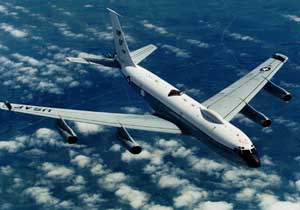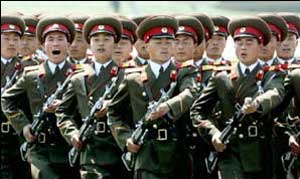|
U.S. News & World Report - July 13,
2003 By Bruce B. Auster and
Kevin Whitelaw Within the past
two months, Secretary of Defense Donald Rumsfeld has
ordered U.S. military commanders to devise a new war
plan for a possible conflict with North Korea. Elements
of the draft, known as Operations Plan 5030, are so
aggressive that they could provoke a war, some senior
Bush administration officials tell U.S. News.
|
 |
|
Adm. Thomas
Fargo |
Adm. Thomas Fargo, head of the U.S.
Pacific Command, and senior Pentagon planners are
developing the highly classified plan. The
administration insiders, who are critical of the plan,
say it blurs the line between war and peace. The plan
would give commanders in the region authority to conduct
maneuvers--before a war has started--to drain North
Korea's limited resources, strain its military, and
perhaps sow enough confusion that North Korean generals
might turn against the country's leader, Kim Jong Il.
"Some of the things [Fargo] is being asked to do," says
a senior U.S. official, "are, shall we say,
provocative."
There are several war plans for Korea--Plans 5026 and
5027, as well as 5030--that outline the different phases
of war and the specific provisions for movements of
large numbers of troops, aircraft carriers, and other
war-fighting requirements. U.S. News has learned details
of the prewar phase of the newest version of Plan 5030.
Some officials believe the draft plan amounts to a
strategy to topple Kim's regime by destabilizing its
military forces. The reason: It is being pushed by many
of the same administration hard-liners who advocated
regime change in Iraq. The Pentagon only recently began
offering details of the plan to top officials at the
White House, the State Department, and other agencies.
It has not yet been approved. A Pentagon spokesman
declined comment.
 One
scenario in the draft involves flying RC-135
surveillance flights even closer to North Korean
airspace, forcing Pyongyang to scramble aircraft and
burn scarce jet fuel. Another option: U.S. commanders
might stage a weeks-long surprise military exercise,
designed to force North Koreans to head for bunkers and
deplete valuable stores of food, water, and other
resources. The current draft of 5030 also calls for the
Pentagon to pursue a range of tactical operations that
are not traditionally included in war plans, such as
disrupting financial networks and sowing disinformation. One
scenario in the draft involves flying RC-135
surveillance flights even closer to North Korean
airspace, forcing Pyongyang to scramble aircraft and
burn scarce jet fuel. Another option: U.S. commanders
might stage a weeks-long surprise military exercise,
designed to force North Koreans to head for bunkers and
deplete valuable stores of food, water, and other
resources. The current draft of 5030 also calls for the
Pentagon to pursue a range of tactical operations that
are not traditionally included in war plans, such as
disrupting financial networks and sowing disinformation.
Against the wall. Some administration officials and
military experts say they consider these tactics
dangerously provocative. What would happen, they ask, if
North Korea shot down an RC-135 or lobbed artillery at
South Korea? "What the Pentagon is trying to do is
balance the risk between ceding the initiative to the
enemy or taking steps to influence it," says Andrew
Krepinevich of the Center for Strategic and Budgetary
Assessments. "But does war become more likely?"
 America's
allies in the region--South Korea and Japan--think so.
They, along with China, worry that if the Bush
administration puts too much pressure on North Korea,
Pyongyang could strike back in unpredictable ways. "Once
we push them too hard against the wall," says a Japanese
official, "we do not know what kind of reaction Kim Jong
Il will have." America's
allies in the region--South Korea and Japan--think so.
They, along with China, worry that if the Bush
administration puts too much pressure on North Korea,
Pyongyang could strike back in unpredictable ways. "Once
we push them too hard against the wall," says a Japanese
official, "we do not know what kind of reaction Kim Jong
Il will have."
It is the Pentagon's job to be ready for war--and
critics of this war plan admit as much. The Pentagon
work on 5030 was triggered by Rumsfeld's desire to
reinvent the military in the wake of lessons learned in
Afghanistan and Iraq--and that includes the way the
nation plans for war. Says one official, "The secretary
wants to make how we plan for conflicts responsive to
changing situations."
But if the Pentagon gives commanders more authority to
take aggressive actions in peacetime, as contemplated in
Plan 5030, it risks tripping over the president's--and
Congress's--authority to commit the nation to war, says
a senior official. "Who decides when to go to war?" the
official asks. "Good question." |